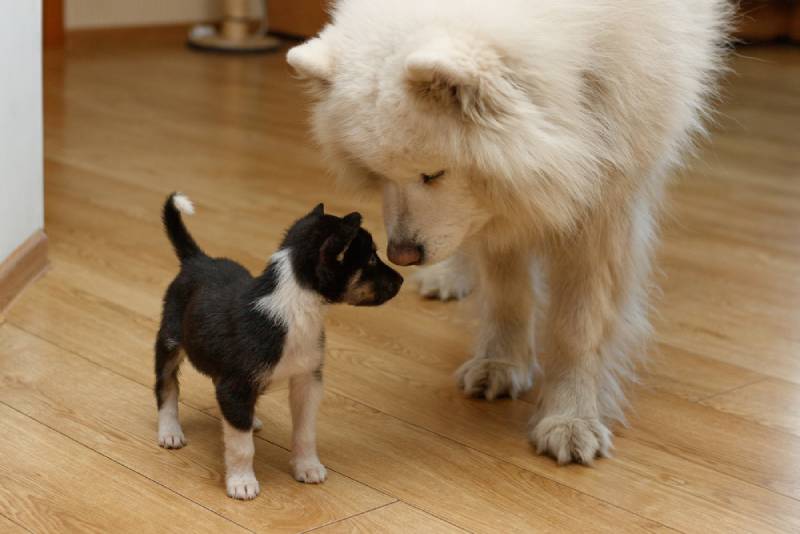16 Dog Breeds With Pointy Ears (With Pictures)
Updated on
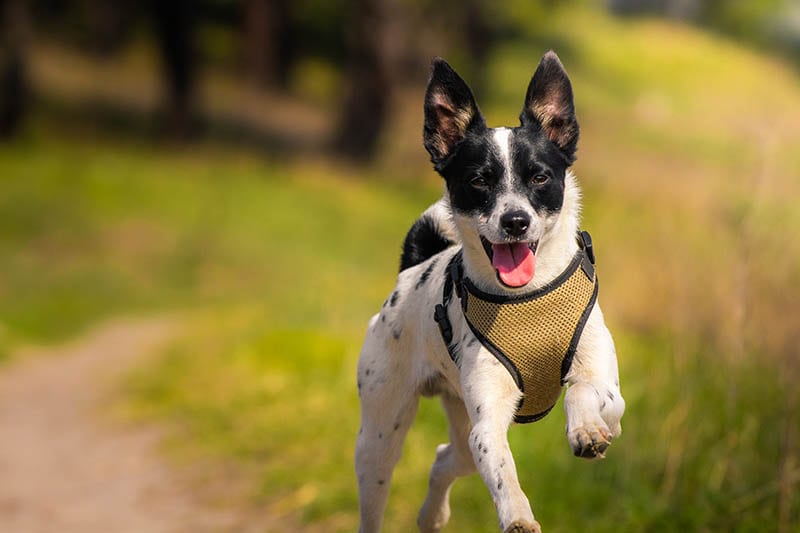
Click to Skip Ahead
Pointy ears are one of those physical characteristics in dogs that draw people towards certain breeds. In addition to other loveable traits like innocent puppy dog eyes and fluffy wagging tails, pointy-eared dogs seem to have an extra special way of communicating with you.
Dogs with pointy ears received this genetic trait through generations of ancestors. Their at-attention ears were useful in picking up sounds from prey and predators and keeping them safe. While your pup likely doesn’t need to rely on his hearing for protection anymore, his large and pricked ears still serve a purpose. Let’s take a closer look at 16 of the most adorable dog breeds with pointed ears.
The 16 Dog Breeds With Pointy Ears
1. Australian Cattle Dogs
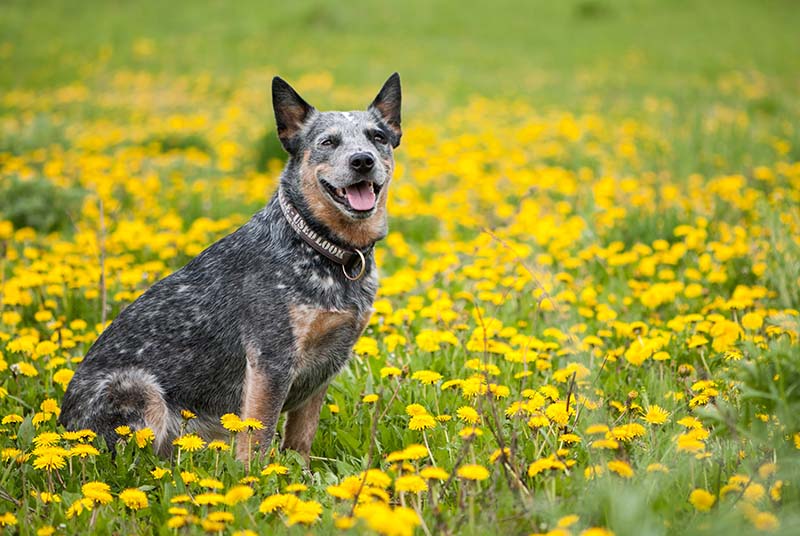
| Origin: | Australia |
| Lifespan: | 13–15 years |
| Height: | 17–20 inches |
Australian Cattle Dogs (also known as Blue Heelers) are a type of herding dog developed in Australia. These medium-sized pups have pricked ears that may be prone to deafness. Although ACDs are energetic and intelligent, they’re known for having an independent streak. They respond well to structured training, which should begin when they’re puppies, as they were bred to herd cattle by biting and have been known to nip at humans. They’re highly devoted and loyal to their families, but they need an outlet for all their energy to stay happy and healthy.
2. Alaskan Malamute

| Origin: | Alaska |
| Lifespan: | 10–14 years |
| Height: | 23–25 inches |
The Alaskan Malamute is a large breed originally bred for strength and endurance. They worked as sled dogs and had a prominent role in working and living alongside their humans. Their ears are small in proportion to their head and will stand erect when at attention. These arctic sled dogs descended from wolves which is why they resemble them so closely in both appearance and personality.
Many Alaskan Malamutes are still used today as sled dogs for personal travel and recreational activities like mushing, skijoring, and canicross. However, most Malamutes are kept as family pets, though they have a high prey drive, and care should be taken when paired with smaller pets.
3. Basenji
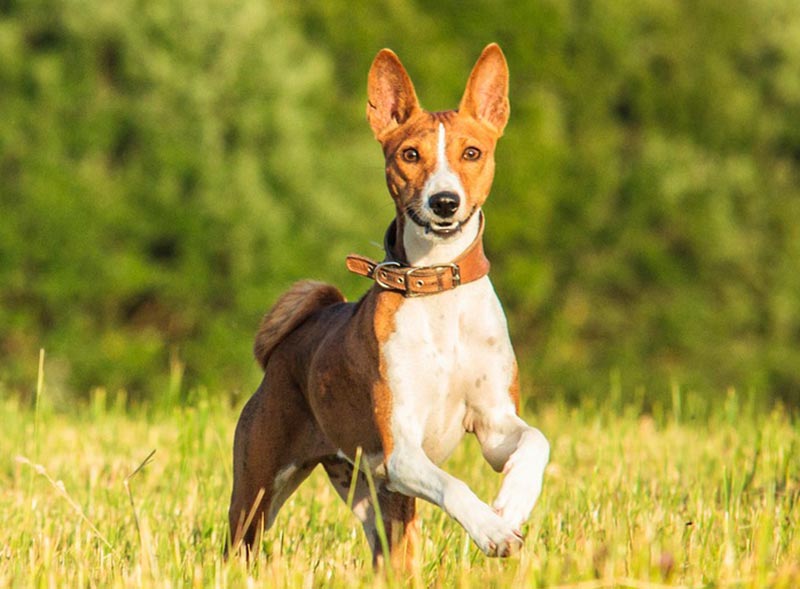
| Origin: | Democratic Republic of the Congo |
| Lifespan: | 12 – 16 years |
| Height: | 16 – 17 inches |
The Basenji is a hunting dog bred to be alert for long hunts in the wilderness of Africa. These compact dogs are very intelligent, energetic, and graceful. They have erect ears and an almost human-like way of expressing emotions. Don’t let their small-ish stature fool you; these athletic dogs are deceptively powerful for their size.
Basenjis are interesting for many reasons, but perhaps the most fascinating is that they don’t bark. Their nickname —the Barkless Dog—is true as they make a unique yodeling-like sound due to the breed’s unusually shaped larynx.
4. Belgian Malinois
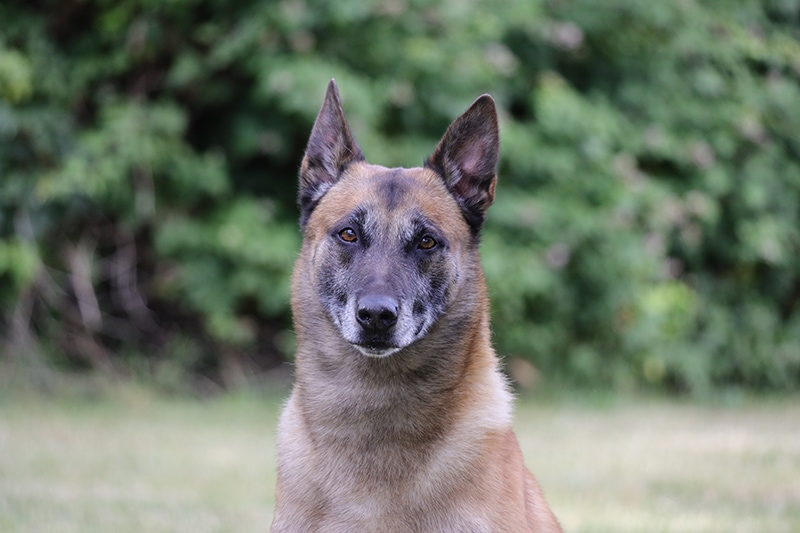
| Origin: | Belgium |
| Lifespan: | 10–14 years |
| Height: | 22–26 inches |
The Belgian Malinois is a herding and working dog developed in the 1800s. These sturdy and muscular pups are smart, confident, and versatile. Aside from herding, the Belgian Malinois has also found work working as a detection dog, guide dog, and police dog. They’ve been used in the military in both World Wars and still perform such roles today.
This breed is hardworking and has a strong guarding instinct, making it suitable to protect your property and family. This people-oriented breed is a busybody and always needs to be doing something to stay happy and healthy.
5. Chihuahua
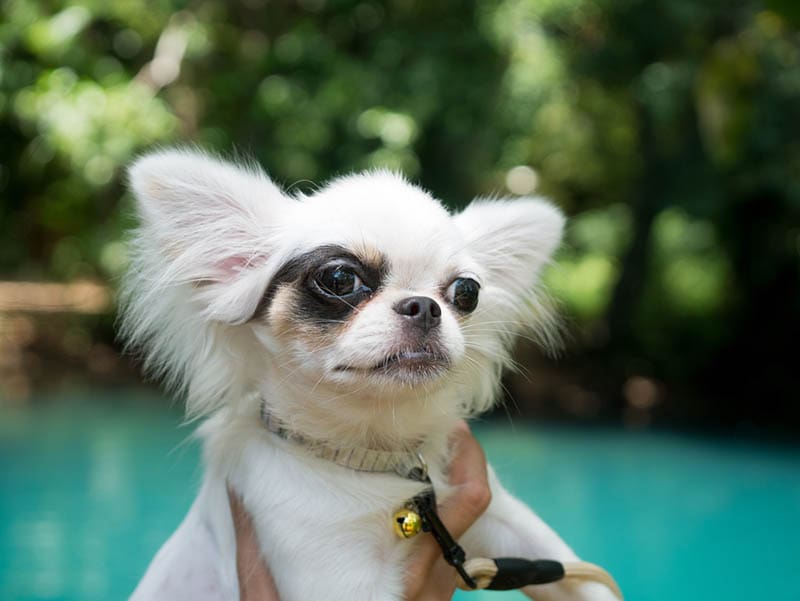
| Origin: | Mexico |
| Lifespan: | 12–20 years |
| Height: | 6–9 inches |
Chihuahuas are a Mexican toy dog breed named after the Chihuahua state in Mexico. These upright-eared dogs are among the smallest of all dog breeds. Though they may be small, they’re chock full of personality. These sassy pups are known for their loyal, alert temperament and “big dog” attitudes. Chihuahuas are born with floppy ears as the muscles aren’t yet strong enough to hold them up. By the time they are around 12 weeks, most puppies will have the fully erect years that Chihuahua lovers have come to know and love.
6. Corgi
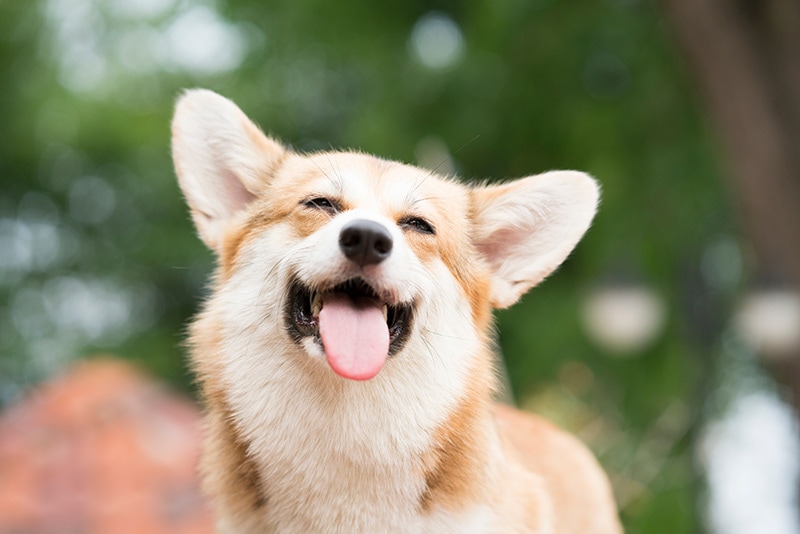
| Origin: | Wales |
| Lifespan: | 12–15 years |
| Height: | 14 – 17 inches |
Corgis are small herding dogs with origins in Wales. There are two types of Corgis: Cardigan Welsh and Pembroke Welsh—with physical differences setting the two apart. The Cardigan Corgi is heavier and taller and has larger and more rounded ears. Both varieties love their humans and are happiest when they’re spending time with them. They make fantastic and highly intelligent companions, so training is easy and enjoyable. Corgis, like Chihuahuas, are born with floppy ears that stand up naturally over time.
7. German Shepherd
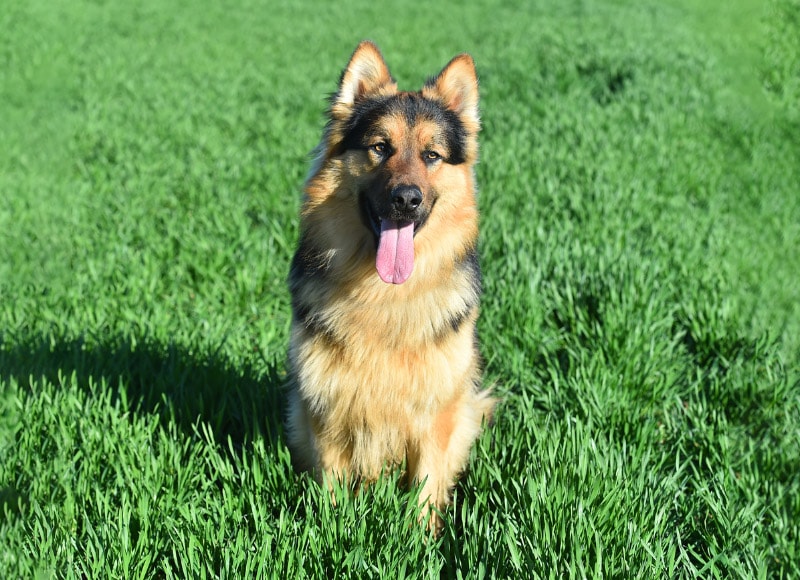
| Origin: | Germany |
| Lifespan: | 9–13 years |
| Height: | 24–29 inches |
German Shepherds are a working dog breed developed from traditional German herding dogs in the 1800s. They were originally used to herd sheep but have since worked in many different roles, including working as search and rescue dogs, police dogs, and even wartime dogs. The German Shepherd has large erect ears, though they can be pulled back during movement. This pointy-eared breed may look tough, but they make great family pets, just make sure you have enough time to take him out to get daily physical and mental stimulation.
8. French Bulldog
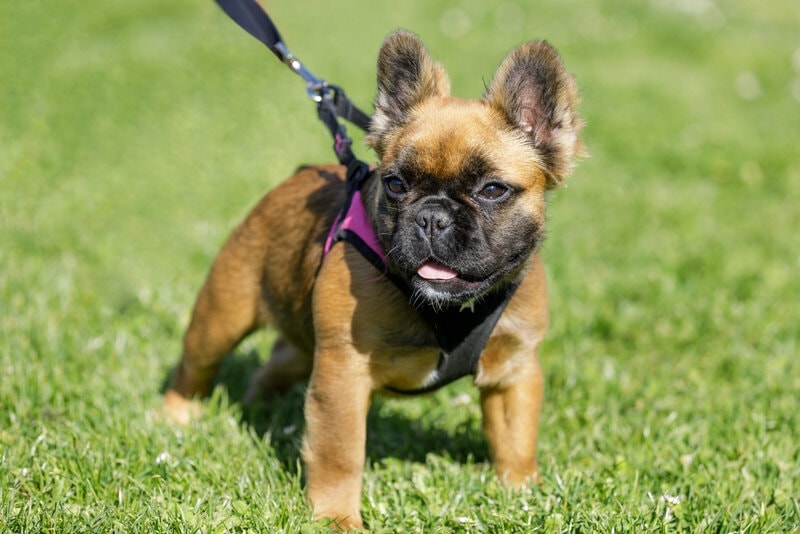
| Origin: | England |
| Lifespan: | 10–12 years |
| Height: | 11–13 inches |
The French Bulldog is a companion dog that first appeared in Paris during the mid-19th century. These adorable and slightly bat-eared pups are people-oriented and must be near their favorite humans to stay healthy and healthy. They’re prone to separation anxiety, so their owners must make time for them daily. French Bulldogs are patient and affectionate pups, though they have stubborn tendencies that can make training them challenging. Additionally, due to selective breeding, Frenchies may be prone to certain health conditions like brachycephalic airway obstructive syndrome.
9. Boston Terrier
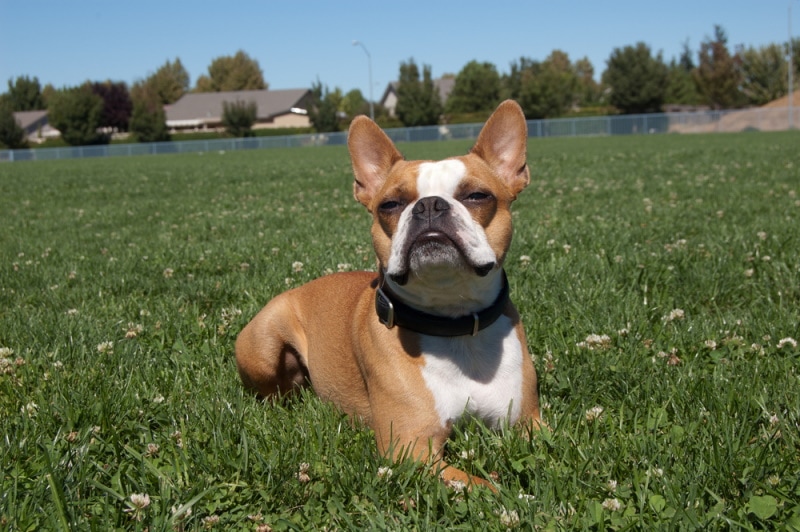
| Origin: | United States |
| Lifespan: | 13–15 years |
| Height: | 16–17 inches |
The Boston Terrier is a small and compact breed with short tails and erect ears. They’re known for their gentle demeanor and happy-go-lucky personalities. Though they were originally bred for pit fighting and rat hunting, most modern-day Boston Terriers have been downsized to be companions. Their mild and calm temperaments appealed to the elitists of Boston, and it is these redeeming qualities that make these pups one of the most popular breeds. Unfortunately, as is often the case with selective breeding practices, the Boston Terrier may develop several health issues like breathing difficulties and eye problems.
10. Shiba Inu
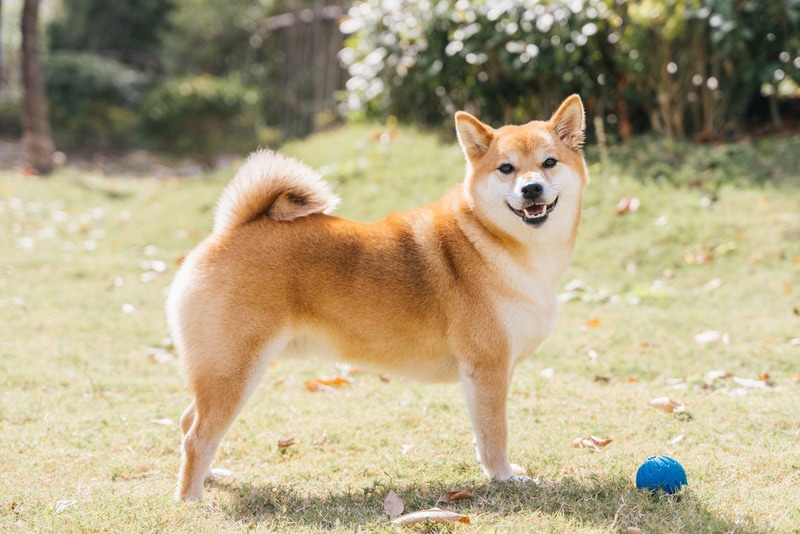
| Origin: | Japan |
| Lifespan: | 12–15 years |
| Height: | 5–16.5 inches |
The Shiba Inu is a well-muscled breed of hunting dog and the smallest of the six original spitz breeds native to Japan. Spitz breeds are characterized by similar physical traits such as long, thick fur, curled back tails, and pointy ears. Shiba Inus are alert, agile, and athletic dogs with a deeply independent streak. They are fastidious self-cleaners, almost cat-like in their dedication to keeping themselves clean. One of the unique characteristics of this breed is the “Shiba scream”, a noise best described as a combination of bark, howl, and whine, reserved for when they’re upset or concerned about something.
11. Papillon
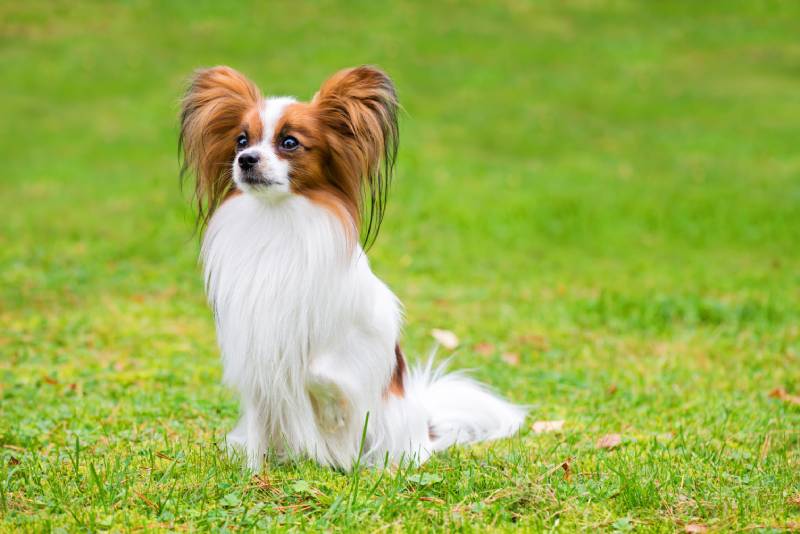
| Origin: | France |
| Lifespan: | 13–15 years |
| Height: | 8–11 inches |
Papillons are a spaniel-type dog and one of the oldest toy spaniel breeds. Spaniels, by definition, are a type of gun dog bred to flush out game from the dense brush; however, Papillons were originally bred to be attentive companions for noblewomen. Papillons are known for their happy, friendly, and adventurous temperament. They’re great family dogs, though their high intelligence requires rigorous training to prevent boredom and resulting bad behaviors.
Their large and well-fringed ears are arguably the most iconic feature. Their ears aren’t unlike a butterfly’s outstretched wings, which is how the breed got its name, as “papillon” is French for “butterfly”.
12. Pharaoh Hound
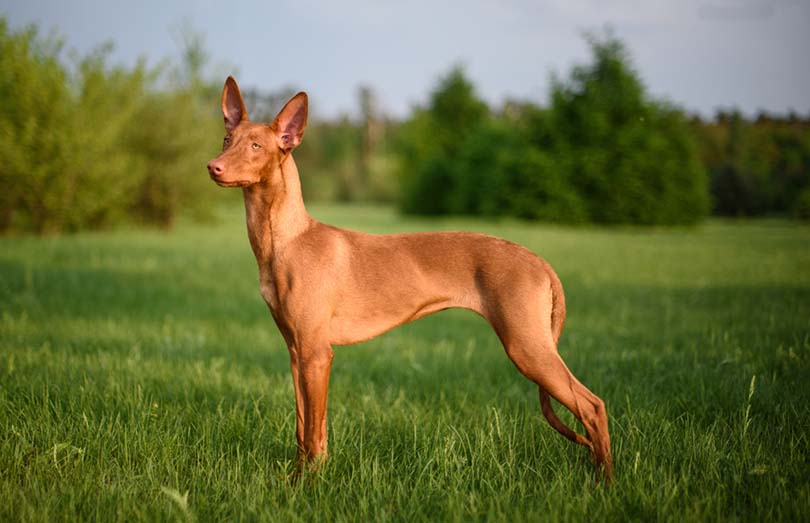
| Origin: | Malta |
| Lifespan: | 11–14 years |
| Height: | 21–25 inches |
The Pharaoh Hound is a hunting dog and one of the oldest domesticated dogs in record history. This slender and graceful breed with pointy, triangular ears that stick upward from their chiseled heads. They are known for their unique ability to “blush” when excited or happy, turning their ears and noses bright pink. Pharaoh Hounds are known for their high intelligence and friendly and affectionate temperament. They’re very gentle and patient, making them a great playmate for families with children.
13. Samoyed

| Origin: | Siberia |
| Lifespan: | 12–14 years |
| Height: | 19–23.5 inches |
Samoyeds, like Shiba Inus, are a spitz-type dog. They’re herding dogs also skilled at hunting, protecting, and sled-pulling. Samoyeds are most often white, though they can have a slight brown tinge to their coat. Their ears are thick, triangular, and covered in fur. Samoyeds are known for their friendly and affable personalities, which, unfortunately, make them poor guard dogs. They often have a happy expression on their face that’s affectionately known as the “Sammie smile.” Samoyeds can be quite vocal, making them great watchdogs as they’ll bark whenever something encroaches on their territory.
14. West Highland White Terrier
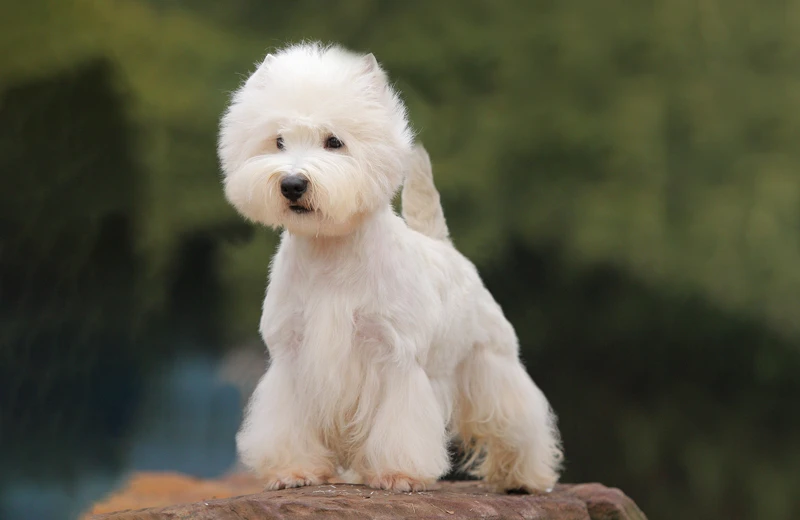
| Origin: | Scotland |
| Lifespan: | 12–16 years |
| Height: | 10–11 inches |
West Highland White Terriers, or Westies, are a Scottish breed with distinctive white coats. As a terrier breed, they were originally bred to hunt vermin, though that inclination to chase away critters is still deeply ingrained in the modern Westie. They have a high prey drive and can be food and toy-possessive, so regular training is necessary. This breed is prone to streaks of stubbornness, so owners may find their pups need a refresher course in training several times during their lifetime. The Westie temperament can vary greatly; some thrive in households with children, and others prefer solitude.
15. Bull Terrier
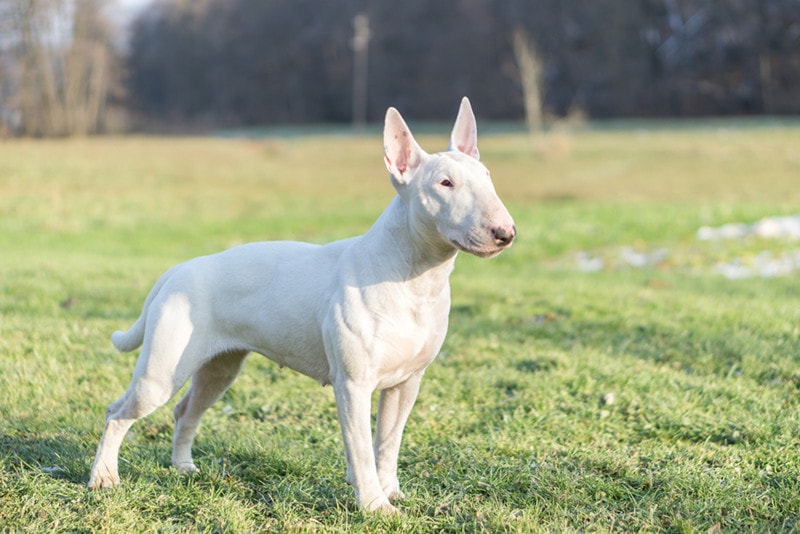
| Origin: | England |
| Lifespan: | 10–14 years |
| Height: | 21–22 inches |
Bull Terriers are unique-looking dogs, easily distinguishable by their egg-shaped head and deep-set triangular eyes that are a bit alien-like. Unfortunately, this breed had a rough start as it was bred for vermin control and animal-based blood sports. This bloody history has given the Bull Terrier a bad reputation as an aggressive and dangerous breed. However, to his human family members, these pups are playful, endearing, devoted, and comical. They’re generally sweet and good-natured but may show aggression toward other dogs.
16. English Toy Terrier
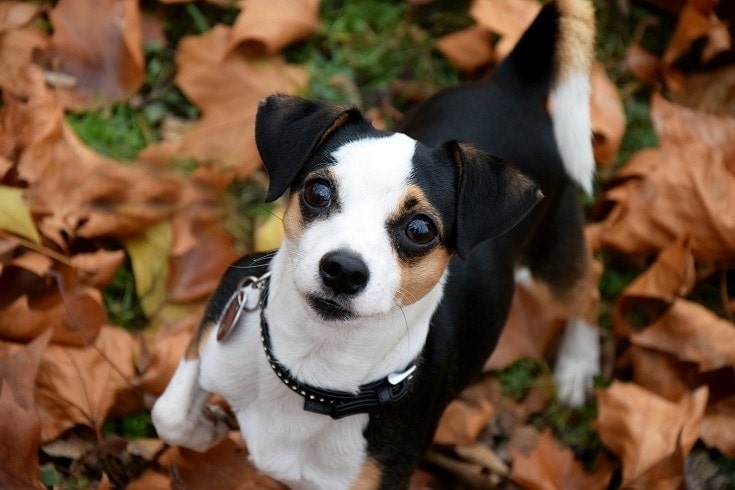
| Origin: | England |
| Lifespan: | 9–13 years |
| Height: | 10–12 inches |
English Toy Terriers are a small terrier breed with a bright, alert, friendly, and affectionate temperament. This breed has origins in the world of the rat pit, a violent “sport” that was popular in Victorian England. Rat-baiting was a blood sport involving releasing captured rats in an enclosed space to see how long a dog would take to kill the rats.
With the formation of the Kennel Club, these dogs moved out of the rat fighting ring and into the conformation show ring. Though modern-day English Toy Terriers are very rare, with only around 100 pups getting registered annually, an effort is being made by breeders to develop a viable gene pool to revitalize the breed.
Why Do Some Dogs Have Pointy Ears?
Dog breeds with pointy ears may have been bred specifically to develop this characteristic. Dogs with erect ears can hear better than their droopy-eared counterparts partly because when their ears stand straight up, their full ear canal is accessible, allowing them to listen without restrictions. Pointy-eared pups are naturally more alert to sounds and can prick their ears when they tune in to something. This ability allows them to pinpoint the exact location of their prey.
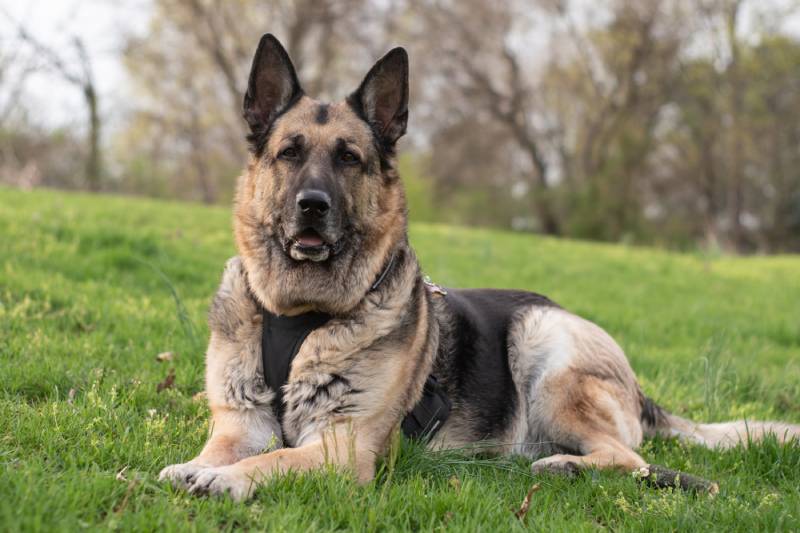
The 5 Types of Pointy Ears
There are a dozen types and shapes of dog ears, but just a few of which are pointy. Let’s take a closer look at some of the pointy ear types so you can get a better idea of what your pup or future pup may have.
1. Prick Ears
Pricked ears are those that stand at attention. They point upwards and are often found on wolf-like breeds like German Shepherds and Belgian Malinois, though smaller breeders can also have pricked ears. This type gives pups an always-on-alert look, though it is important to note that not all dogs with prick ears are natural. Cropping removes all or some of the external flaps of a dog’s ear. It is an entirely unnecessary and cruel surgical procedure that does not benefit the dog.
2. Bat Ears
Bat ears look exactly as you’d expect them to. They are large, V-shaped, and, unsurprisingly, look a lot like the ears of a bat. Dogs with bat ears include Corgis and Chihuahuas. Their ears can be outwardly inclined and even extend beyond the sides of their head, giving them an adorable disproportionate look.
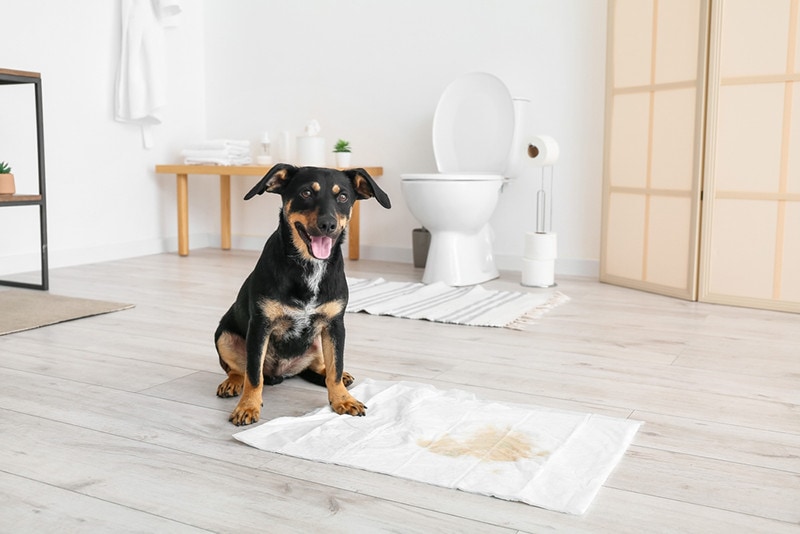
3. Candle Flame Ears
This ear type is characterized by ears with a curve at the base and a slight fold on the outer edge, giving them the appearance of a candle flame. Only a handful of dog breeds have this ear type, including the exceedingly rare English Toy Terrier.
4. Blunt-Tipped Ears
Blunt-tipped dog ears were developed by breeders from the prick ear shape. The two shapes look almost identical, except the blunt style has a smooth curve at the apex instead of a sharp point, as seen in the prick-eared style. French Bulldogs are a great example of blunt-eared pups.
5. Hooded Ears
Hooded ears are another variant of the prick ear. The key difference is that the hooded type curves inward slightly, giving an impression of a cowl or hood. Basenjis are one of the few breeds with this ear type.
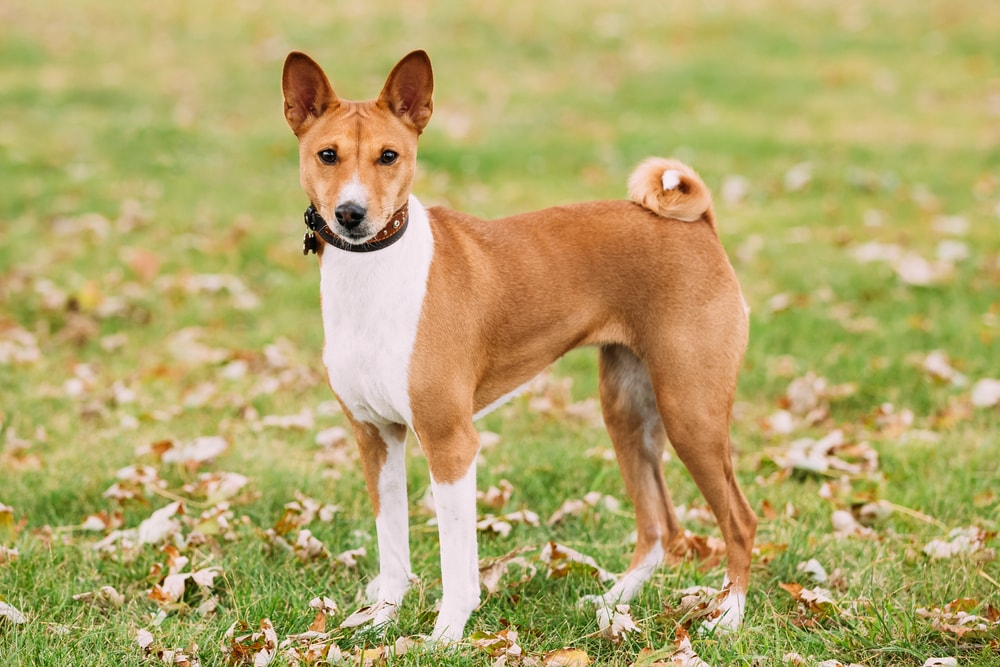
Final Thoughts
As you can see, pointy-eared dogs come in many different shapes and sizes. The one thing that ties them all together is their ancestry, as they all relied on their acute sense of hearing to perform some type of function at some point in their history.
Featured Image Credit: FellowNeko, Shutterstock

